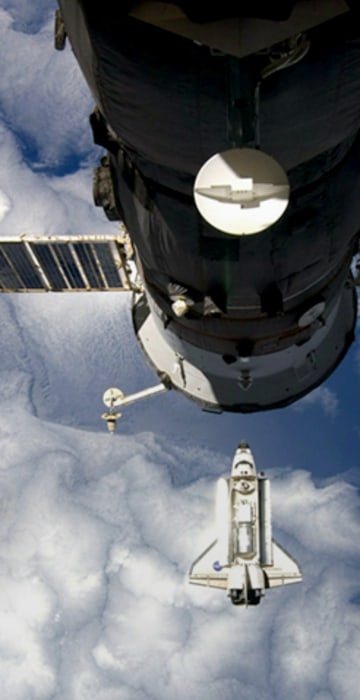
Science News
Month in Space: February 2011
Click through highlights from the shuttle Discovery's final space mission and other cosmic imagery from February 2011.
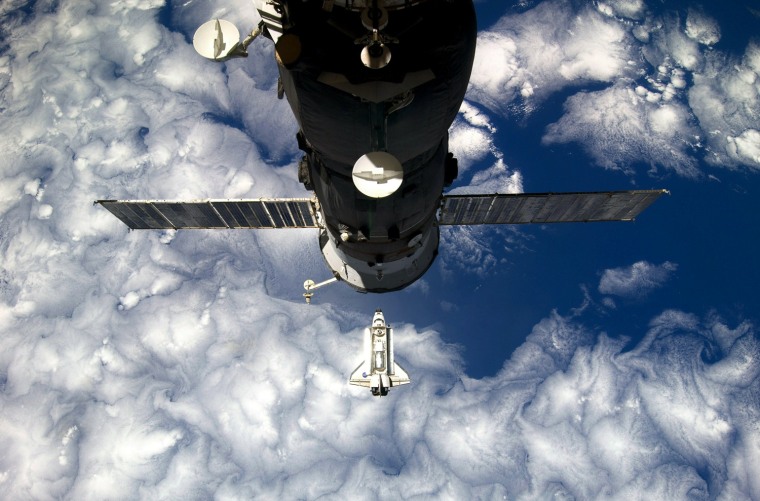
Closing in
Backdropped by Earth's white clouds and blue water, the space shuttle Discovery can be seen approaching the International Space Station for a final time on Feb. 26. A Russian Progress spacecraft that is docked to the station points downward toward the shuttle in this photo, which was captured by a station crew member.
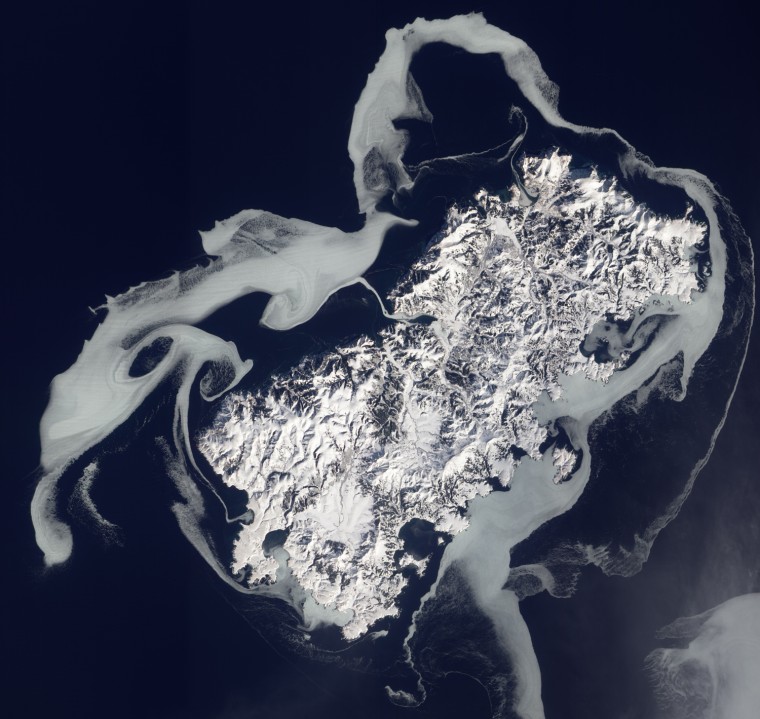
Swirls of ice
Ostrov Shikotan is a volcanic island at the southern end of the Kuril chain, off the coast of the Russian Far East. Shikotan lies along the extreme southern edge of winter sea ice in the Northern Hemisphere. An imager on NASA's Earth Observing-1 (EO-1) satellite captured this natural-color image of Shikotan on Feb. 14. The island is surrounded by swirling shapes of ghostly blue-gray sea ice.
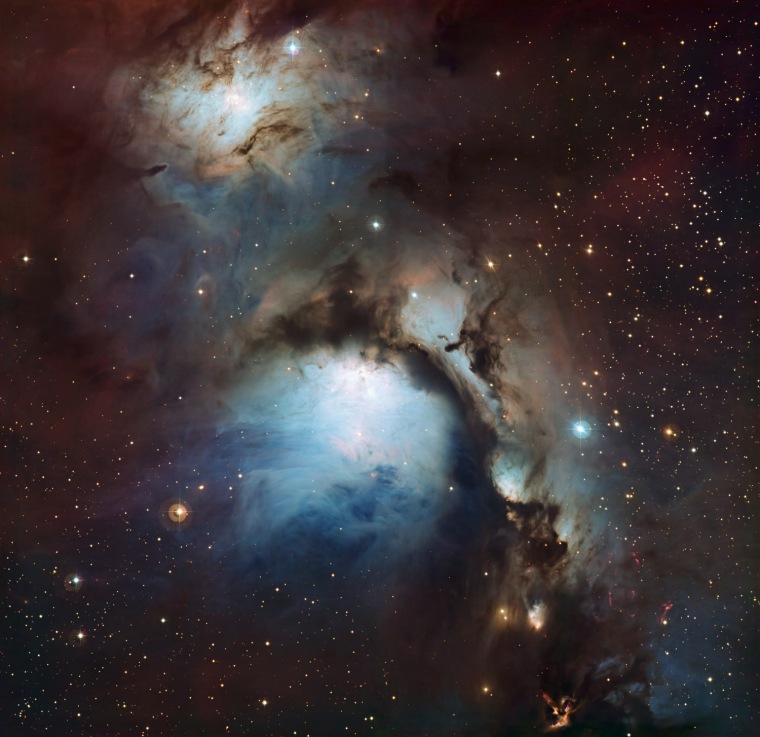
Cosmic reflections
This image of the reflection nebula Messier 78, released on Feb. 16, comes from the Wide Field Imager camera on the MPG/ESO 2.2-meter telescope at the European Southern Observatory's La Silla Observatory in Chile. The color picture was created from many monochrome exposures taken through blue, yellow/green and red filters, supplemented by exposures through a filter that isolates light from glowing hydrogen gas.

Pool practice
With the aid of scuba divers, spacesuit-clad astronaut trainees take part in drills in a pool at Russia's Star City cosmonaut training center outside Moscow on Feb. 18. Underwater training simulates conditions of weightlessness and is a part of space crew training.
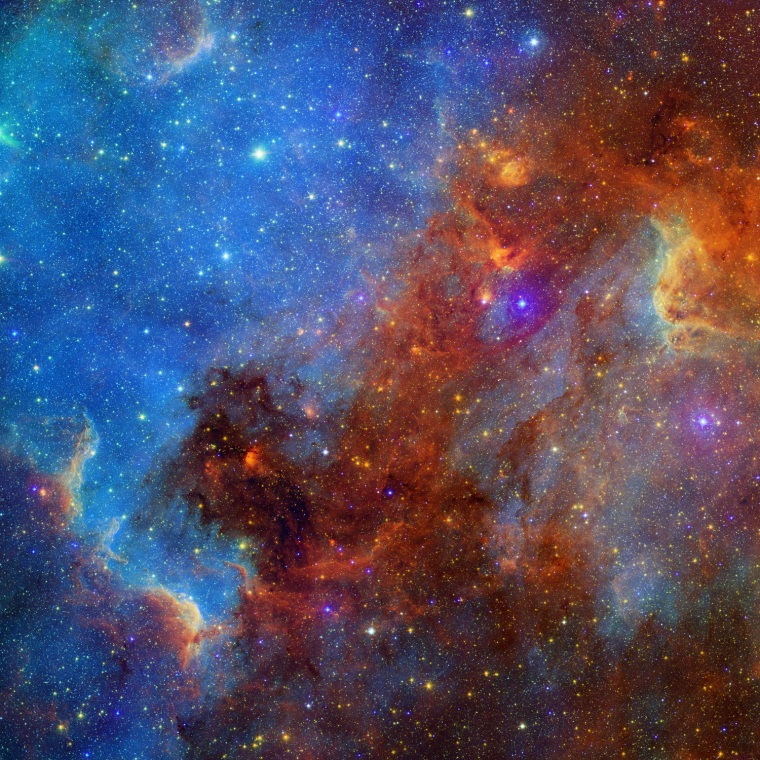
Continent in the sky
A photo provided by NASA on Feb. 10 shows a Spitzer Space Telescope view of the North America Nebula in visible light and infrared wavelengths. The shape of North America can be seen in vivid shades of blue toward the left side of the image. That light comes from hot gas in the nebula. Reddish colors represent strong infrared emissions.
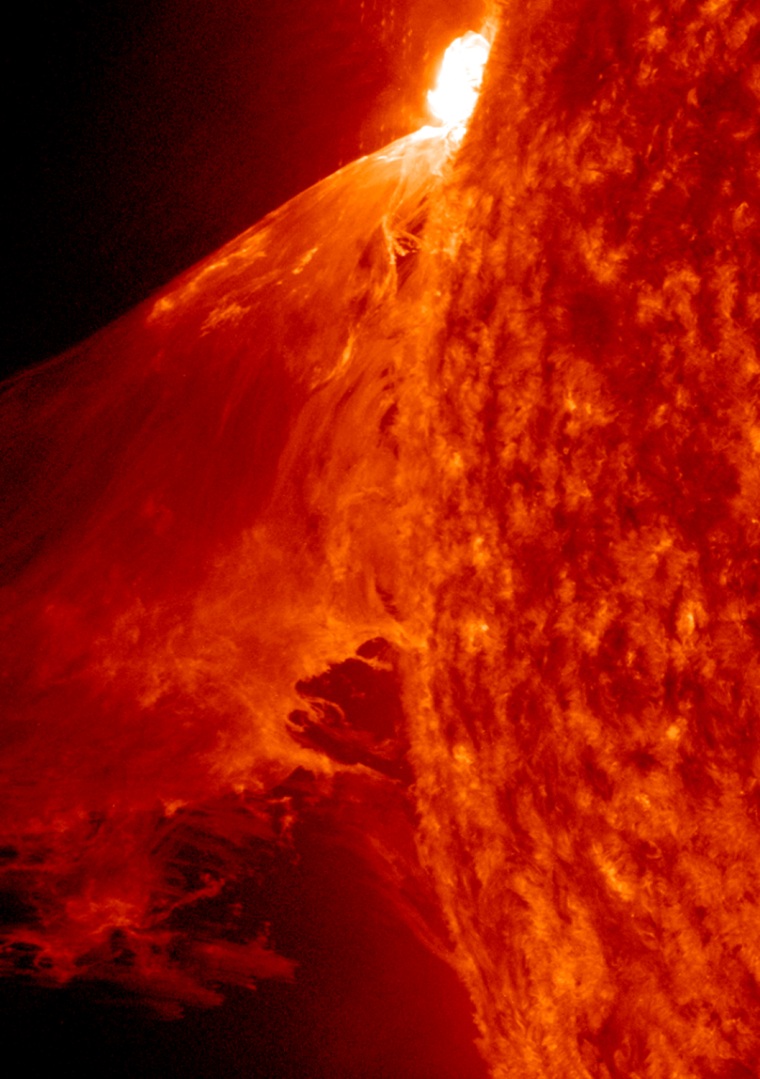
Monster blast from the sun
When an M-3.6-class flare occurred near the edge of the sun, it blew out a gorgeous, waving mass of erupting plasma that swirled and twisted over a 90-minute period on Feb. 24. The event was captured in extreme ultraviolet light by NASA's Solar Dynamics Observatory. Some of the material blew out into space, and other portions fell back to the surface.
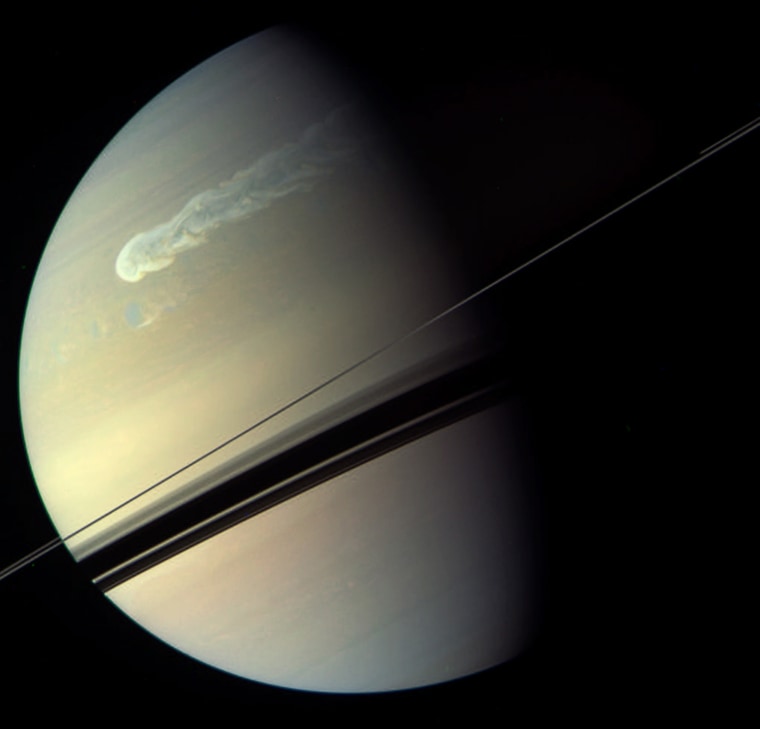
Saturn's northern storm
As part of its routine monitoring of Saturn's atmosphere, the Cassini orbiter took the photos needed to compose this false-color composite view of the storm reaching across much of the planet's temperate northern latitudes on Feb. 4. The view is made up of three images taken through infrared, green and blue filters.
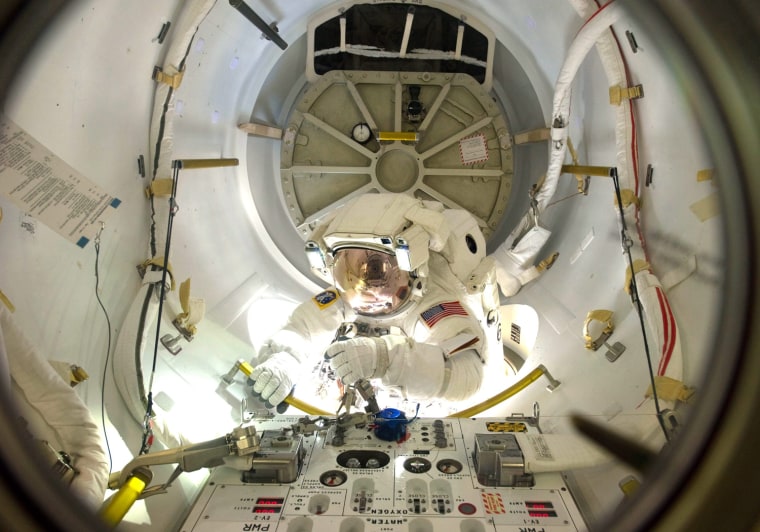
Getting ready for a walk
Discovery astronaut Alvin Drew prepares to go on a spacewalk in this Feb. 28 picture, which shows an area partially inside and partially outside the International Space Station's Quest air lock. Drew and fellow spacewalker Steve Bowen took on a variety of maintenance tasks during the shuttle Discovery's final visit to the space station.
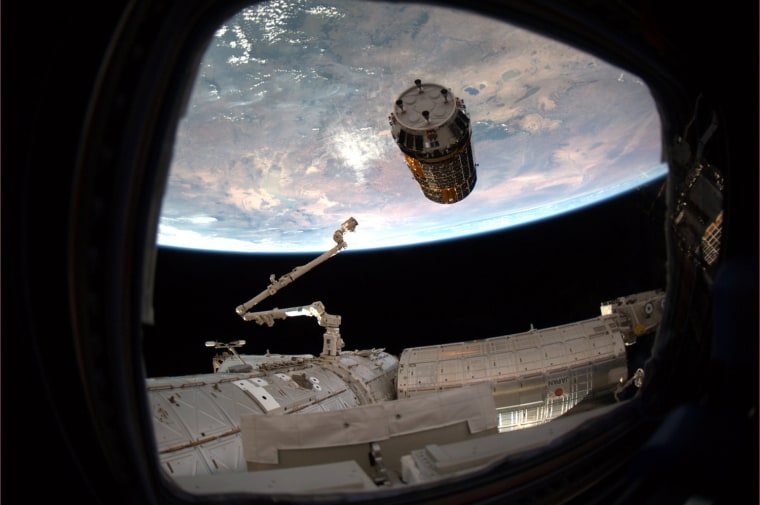
Welcomed with open arms
The International Space Station's robotic arm is extended toward a Japanese cargo ship known as Kounotori 2. The Japan Aerospace Exploration Agency says the transport vehicle was brought in for docking on Jan. 27. The vehicle carried nearly six tons of food, water, clothing and experimental equipment for the station's astronauts.
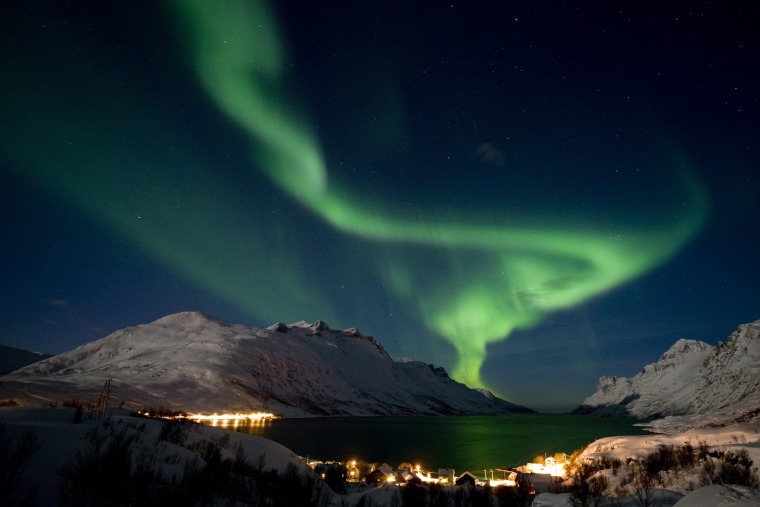
Light show
The northern lights are seen in the sky above the village of Ersfjordbotn near Tromso in northern Norway, early on the night on Feb. 21. Such auroral displays are caused by the interaction between electrically charged particles from the sun and gas molecules in the upper atmosphere of the Earth, about 60 miles up.
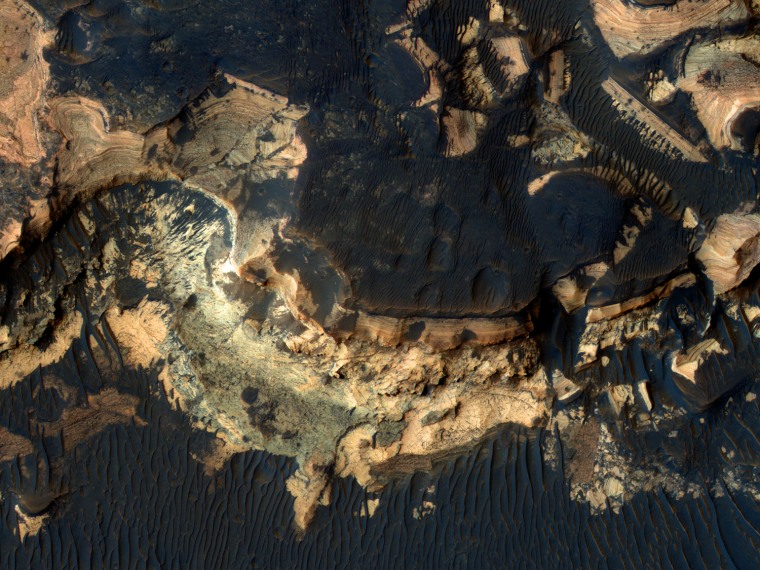
Ready for landing
This enhanced-color image shows Holden Crater on Mars, one of the four candidates being considered as a landing site for NASA's Curiosity rover. The rover is due for launch later this year. The high-resolution camera on NASA's Mars Reconnaissance Orbiter, known as HiRISE, has taken color imagery of all four sites so that scientists can decide which site is most promising. This view of Holden Crater was released on Feb. 16.
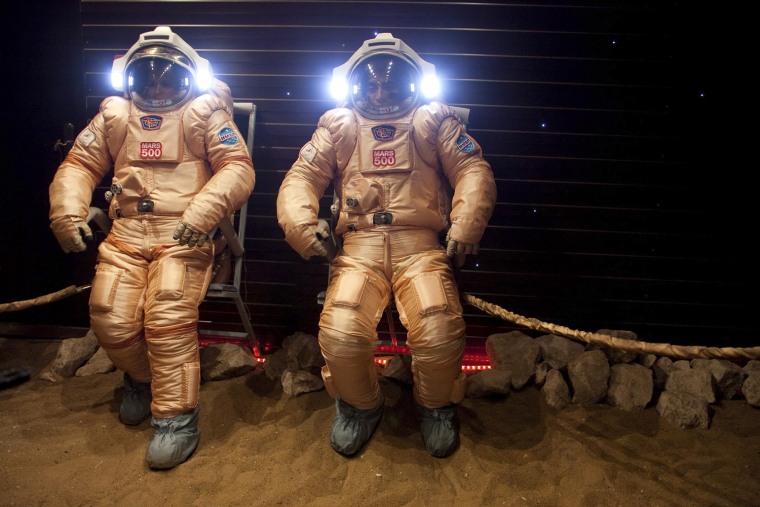
Walking on a mock Mars
A mock mission to Mars "landed" on a simulated Red Planet on Feb. 14, and in the days afterward, volunteer crew members went on three make-believe Marswalks. The simulated surface was actually a giant sandpit, built inside a Moscow research institute. The exercise was the climax of a 520-day isolation experiment aimed at studying how a future real-life crew would handle the psychological stresses of a Mars mission.
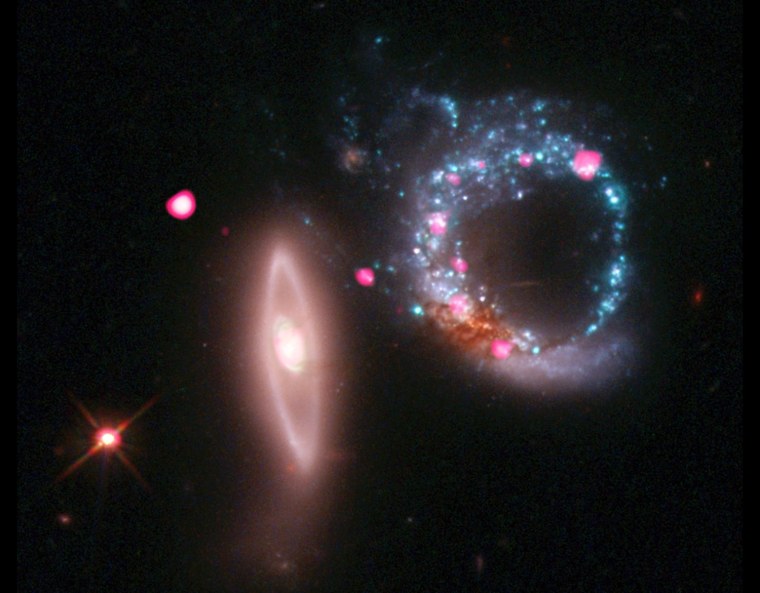
A ring of black holes
This composite image, released Feb. 9, shows Arp 147, a pair of interacting galaxies located about 430 million light years from Earth. X-ray observations from NASA's Chandra X-ray Observatory are shown in pink, and visible-light readings from the Hubble Space Telescope are shown in red, green and blue. Scientists say the pink bursts in the ring-shaped galaxies are emissions from black holes.
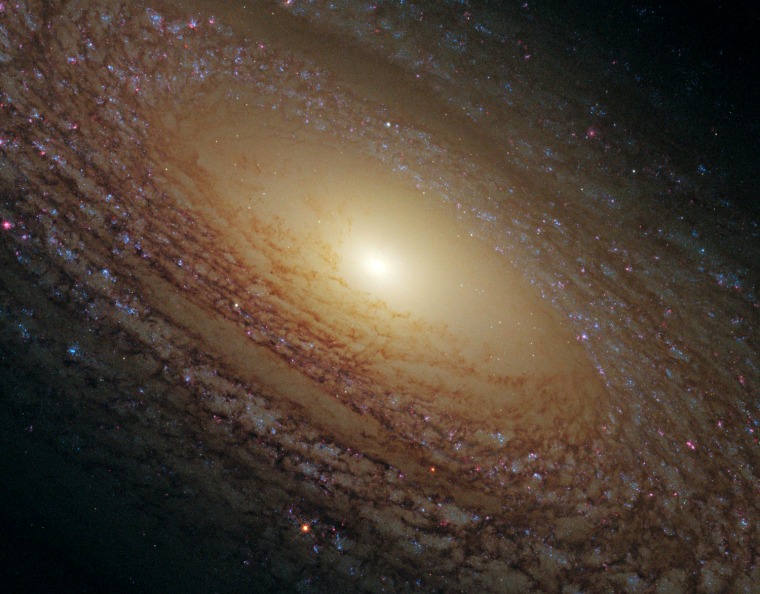
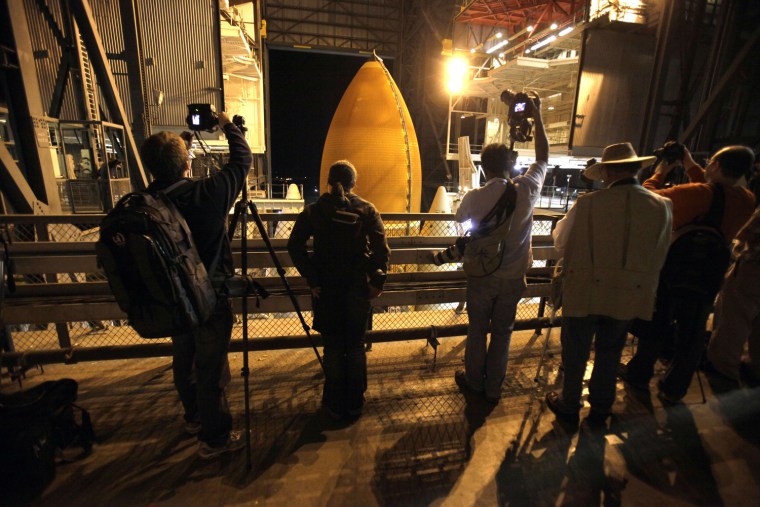
Time to move out
Photographers take pictures of the space shuttle Discovery from the 16th floor of the Vehicle Assembly Building shortly before it began its journey to Launch Pad 39A at Kennedy Space Center in Florida on Jan. 31. The shuttle's orange external fuel tank can be seen over the railing. Discovery's move took about seven hours.
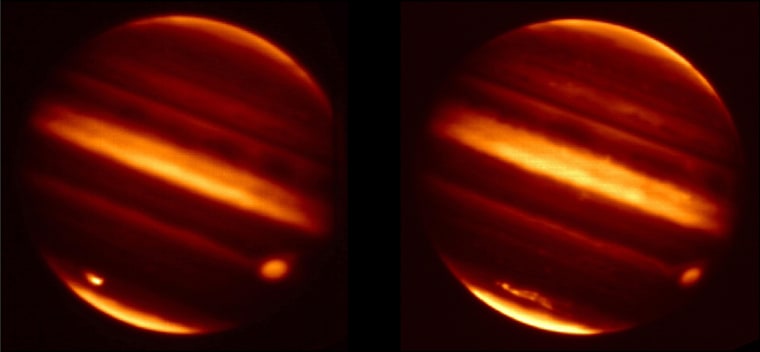
Jumpin' Jupiter
Particle debris in Jupiter's atmosphere is seen after an object hurtled into the atmosphere on July 19, 2009, in these infrared images obtained from NASA's Infrared Telescope Facility in Mauna Kea, Hawaii, and released by NASA on Jan. 26, 2011. The image on the left was taken July 20, 2009, and the image on the right was taken on Aug.16, 2009. The impact and its after-effects can be seen as the bright spot on the lower left of the July 20 image and as the bright smudge on the lower left of the Aug.16 image.

Remembering Challenger
People hold flowers and stand quietly during a remembrance ceremony at the Kennedy Space Center visitor complex in Florida, marking the 25th anniversary of the space shuttle Challenger disaster on Jan. 28. Seven astronauts died when Challenger blew up shortly after its launch from Kennedy Space Center.
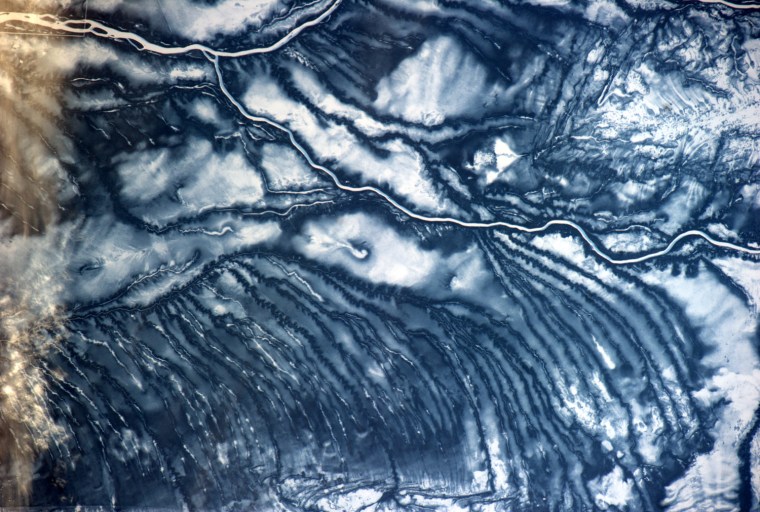

Eyes on the sky
Four antennas of the European Southern Observatory's ALMA array of radio telescopes in Chile gaze up at the star-filled night sky in anticipation of the work that lies ahead. The moon lights the scene on the right, while the band of the Milky Way stretches across the upper left. This photograph was ESO's "Picture of the Week" for Feb. 21.